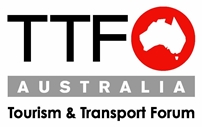
Public transport getting better, but we still love our cars
New Tourism and Transport Forum Australia (TTF) research released today shows that despite nearly 40 per cent of Australians thinking public transport is getting better, they are still ‘wedded to their wheels’.
TTF’s report, The Future of Mobility, is an overview of the future trends that will change the way that we travel, such as on-demand transport, autonomous vehicles and personalised automated flying drones.
“While most experts predict that autonomous and on-demand transport services will quickly lead to the end of private car ownership, a new nation-wide survey undertaken as part of this research has shown that a staggering 76 per cent of Australians still believe that they will own their own car in 10 years’ time,” TTF Chief Executive Margy Osmond said.
“Most surprisingly, it is the younger generation who are the least likely to embrace the concept of autonomous vehicles and on demand transport, with 84 per cent of Australians aged 18 to 25 convinced that they will still own a car in the short-term.”
Ms Osmond said that to increase the demand for public transport we need to make it easier and faster with the capacity to be responsive to the changing likes and dislikes of commuters.
“For 57 per cent of Australians the car is their preferred mode of transport yet 70 per cent believe that governments should invest in public transport services and infrastructure rather than new roads and highways,” Ms Osmond said.
Ms Osmond said that transport technology will provide a world of exciting options that right now look a bit like science fiction. Some 67 per cent of Australians believe that drones will be used in the future to transport people as well as goods.
An intrepid 39 per cent are keen to be part of this airborne revolution and that begs some very large and real questions about the design of our cities into the future with our skies potentially thick with people laden drones.
“Technology and innovation on their own will not be the silver bullet to all our problems. We need a planned and integrated mobility network that works with high-frequency public transport services, the shared economy options and with new disruptors in the sector,” Ms Osmond said.
“More immediately, it is great to see governments across Australia investing heavily in new transport infrastructure and services, but we cannot simply build our way out of future congestion. We need to have an ongoing conversation with travellers to encourage the use of new flexible options.
“The good news is that Australians are receptive to a great deal of the new technology available, with 64 per cent of commuters preferring to use a smart card such as Opal, Myki or Go Card to access public transport services rather than the ticketing options of the past,” Ms Osmond said.
“Furthermore, trials like the new open loop project on the Manly Ferry in Sydney are all about the future and making the process as easy as possible for locals and visitors to Australia.
“Our political leaders must be at the forefront of the transport revolution and look to embrace the potential of new technologies, no matter how ‘out there’ they may seem.”
Other key findings within the report include:
• 54 per cent prefer fixed timetabled public transport services, compared with 9 per cent who favour on-demand transport services;
• 64 per cent prefer to access public transport timetables online, compared to 18 per cent who prefer physical timetables;
• 55 per cent of commuters believe that smart phones and real time information have made public transport a more convenient form of travel; and,
• 39 per cent of commuters believe that their public transport services have improved over the past five years.
